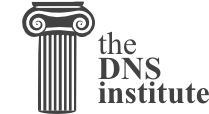
Copyright © 2014, 2015, 2016, 2017 Internet Systems Consortium, Inc.
Abstract
The Domain Name System Security Extensions (DNSSEC) extends standard DNS to provide a measure of security; it proves that the data comes from the official source and has not been modified in transit.
This guide introduces the DNSSEC standards and shares several examples of implementing, maintaining, and troubleshooting DNSSEC.
Table of Contents
List of Figures
List of Tables